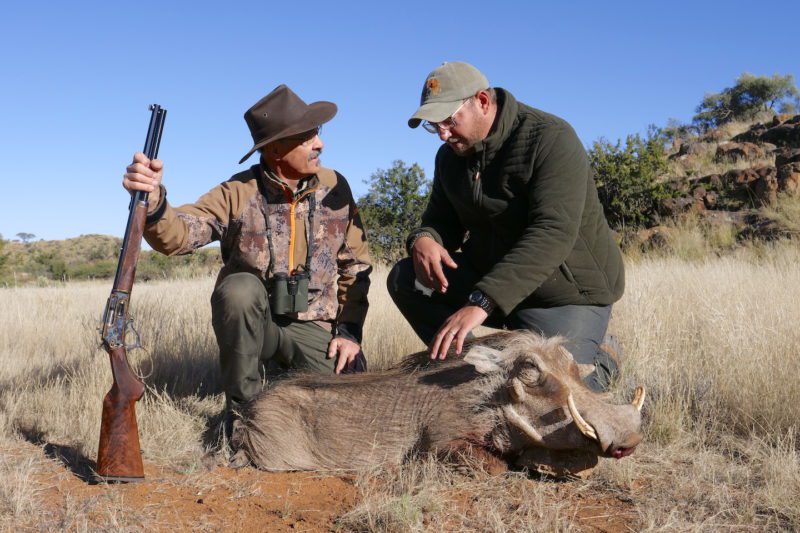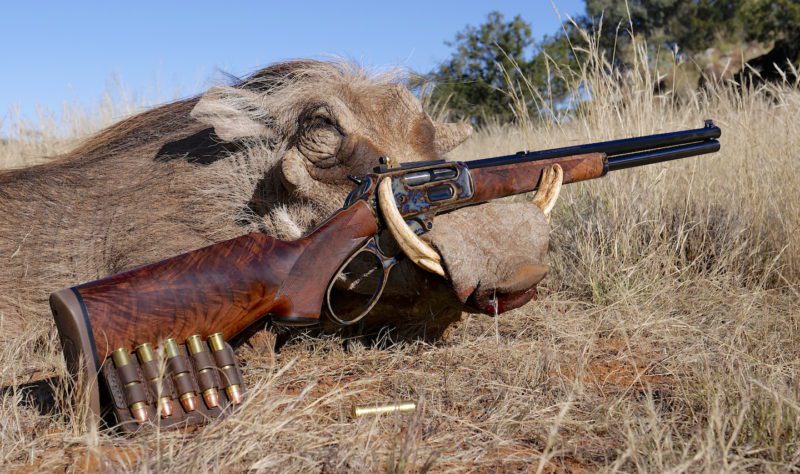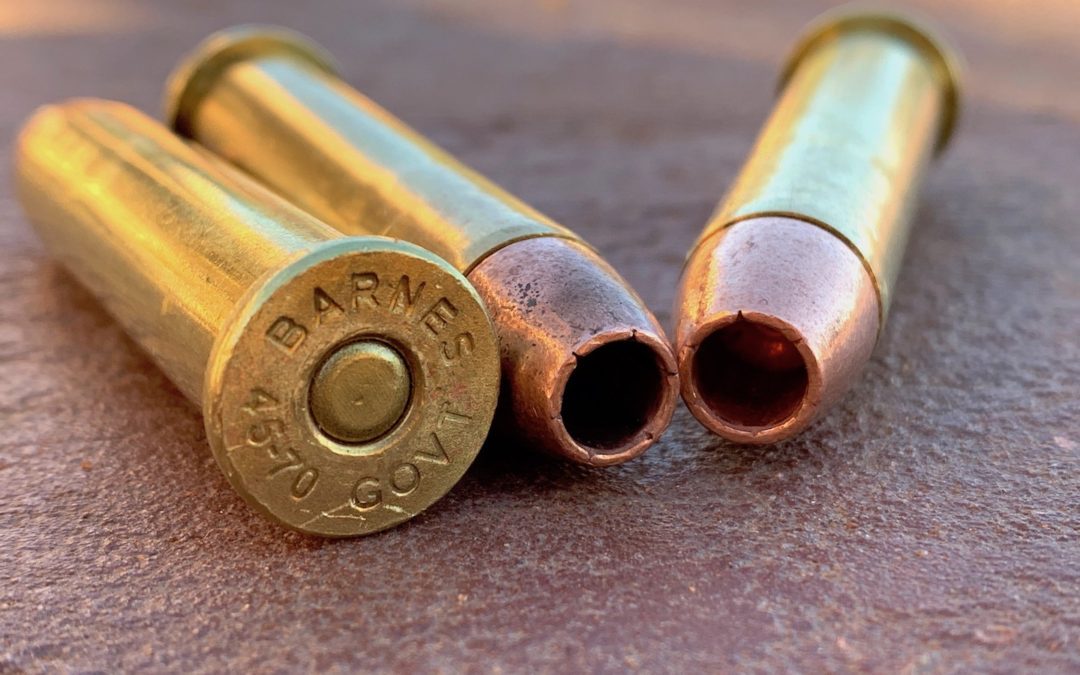The 45-70 Govt. carries a powerful mystique. Big bore. Heavy hitter. Knockdown power. A favorite of commercial bison hunters in the 1870s. So how do you think it performed on this 90-pound African warthog?

Fort Richmond Safaris PH Geoffrey Wayland said “shoot that warthog” when this old boar appeared in the short grass. My beautiful, borrowed Marlin Model 1895 from the Custom Shop (Skinner peep sight, case colored receiver, large loop lever, 18.5″ octagonal barrel, Wild West trigger, hand-checkered extra-fancy walnut) rose to the occasion and sent a 300-grain Barnes TSX bullet 108 yards to land on the leading edge of the boar’s shoulder. What happened next is the heart of this story.
45-70 Govt. Up Close And Personal
Here are the clinical details: The 300-grain Barnes bullet left the muzzle at roughly 1,800 fps carrying 2,159 f-p of energy. At its impact range of 108 yards, remaining energy should have been about 1,500 foot-pounds. That is theoretically enough power to lift 1,500 pounds a foot above the ground or a 100-pound warthog 15 feet straight up. This particular old pig hadn’t read the ballistic tables. Instead of flipping through the air, recoiling several feet backward, or even falling on its side, the old boar merely ran as if alarmed.
“Did I miss?” I asked Geoffrey.
“No, you hit it. Let’s go see.”
While tracker Pa searched for a blood trail (there was none,) Geoffrey and I moved ahead along the hog’s line of departure. After about 150 yards we spotted our quarry lying on its side. But it wasn’t quite dead, so I applied one more 300-grain slug between the forelegs, up through the heart and lungs and out the back. That shot did not move the small desert hog so much as an inch.

Whether the 45-70 Govt. can knock down a warthog or not, hunting with that historic cartridge in a Marlin lever-action as beautiful and smooth as this one adds challenge, depth, and romance to any hunt. Shot placement beats “knockdown” power every time.
Post Hunt Autopsy Of 45-70 Govt. Performance
Our post-hunt autopsy revealed the first bullet had struck just in front of the boar’s right “shoulder,” mid-height, passed above the heart and through the lungs the length of the thoracic cavity. It then punched through the diaphragm, into the paunch, and exited in front of the left ham. No structural bones were hit, but the bullet traversed most of the vital organs we hunters aim to disrupt.
So, let the conjecture and arguments begin. But don’t make the common mistake of condemning the 45-70 Govt. cartridge, the 300-grain Barnes TSX bullet, the Marlin rifle, or the shooter on this one incident. Both Geoffrey and I called the hit nigh perfect. The bullet obviously had sufficient momentum for complete penetration. The .458″ bullet had the diameter many big bore advocates insist is necessary for creation of an adequate wound channel (this ain’t no puny 6.5mm anything!) And you can’t convince me the Barnes TSX with its wide, hollow nose cavity failed to open. Yes, there is the chance that this particular pig was tougher than most and persevered despite perfect shot placement. Regardless, where was that famous bison-slaying knockdown power? That is the big question. If “knockdown power” were all it’s cracked up to be, why wasn’t this hog knocked down?
50 Years Experience Illustrates 45-70 Govt. Performance
Fifty years of hunting experience with a wide variety of cartridges and bullets on well over 120 different big game species have informed me that bullet placement and performance (expansion and penetration) trump so-called knockdown power every time. Hit the central nervous system and yes, you do knock down your prey. But it takes amazingly little power to do it.
Does this mean that a low energy cartridge with a light, small diameter bullet is just as effective as a 45-70 Govt? Not necessarily, but maybe. Sometimes. My advice — and this is echoed by Geoffrey, Leon, Mark and other PHs at Fort Richmond Safaris — is to hunt with and enjoy whatever cartridge you shoot well. Just don’t expect it to knock anything down. Strive for precision placement with a bullet designed to expand reliably at your anticipated impact energies and penetrate far enough to reach the vitals. And hone your tracking skills.
During a half century of hunting around the world, the author has learned to never say always and never say never when it comes to bullet performance.

